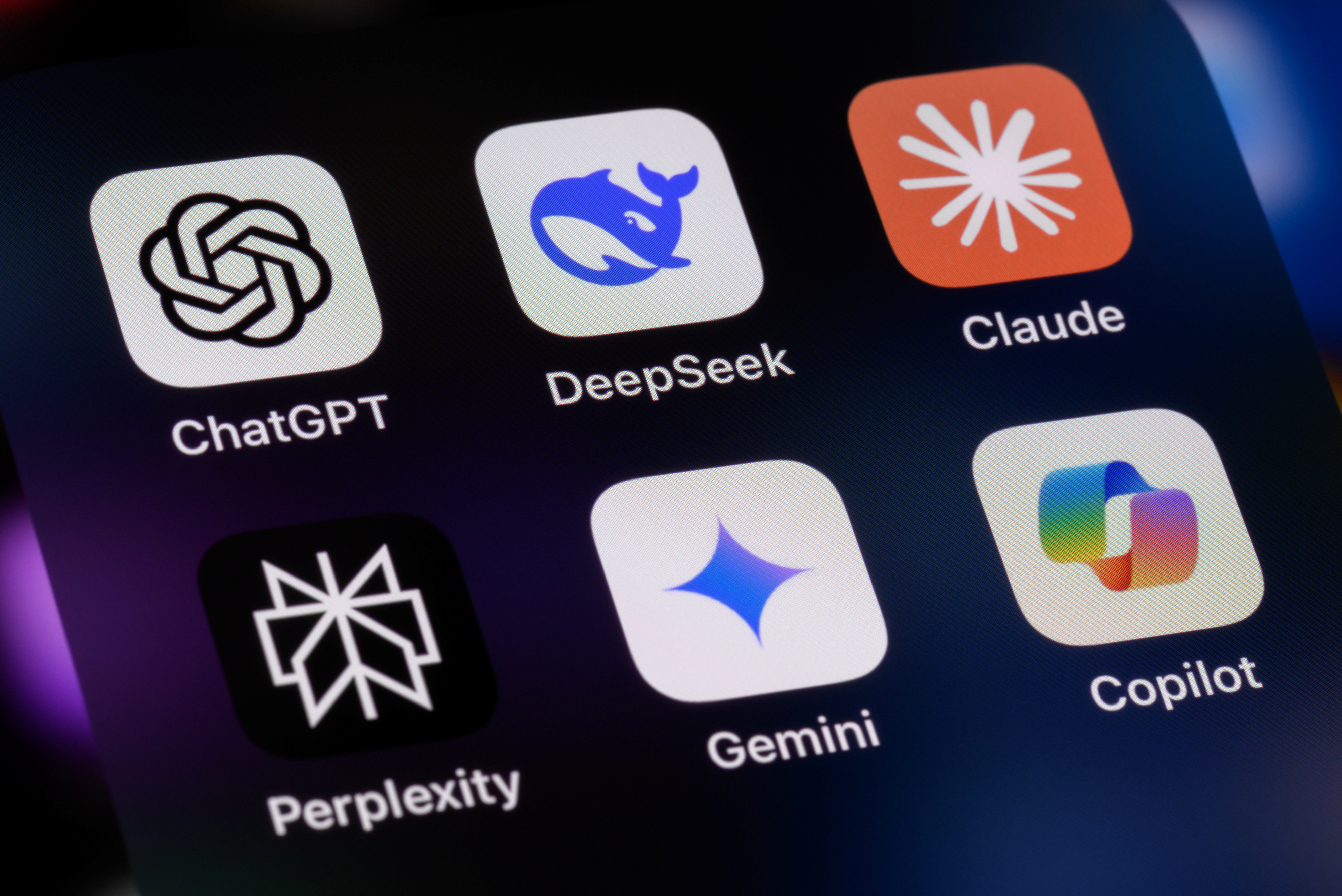Amazon's Alexa is at Your Command
A virtual personal assistant is like a genie you can summon 24/7.

Five years after Apple added Siri to the iPhone, many smartphone users are accustomed to talking to a disembodied voice and expecting a helpful response. Now, Amazon has taken the concept of a virtual personal assistant a step further. Set up one of the devices in the Echo lineup in your home or office and Amazon’s virtual assistant, Alexa, will do your bidding. The technology is completely hands-free: You don’t have to stop what you’re doing and fiddle with your smartphone to handle a robust list of tasks.
Make a wish. Amazon’s trio of virtual assistants are essentially Wi-Fi-connected smart speakers that you control with the sound of your voice. At just 9.25 inches tall, the Amazon Echo ($180) is small enough to sit on your kitchen counter, yet it contains two speakers with surprisingly good audio quality. A group of seven built-in, far-field microphones are always listening for your call. When you summon Alexa, the blue ring atop the cylinder lights up and Alexa jumps into action, whether it’s to check the weather, read you news headlines, schedule events on your Google calendar or keep track of your family’s shopping list.
For less than a third of the price, the Echo Dot ($50) packs nearly as much punch into a diminutive device that looks like a hockey puck. The Dot is just as smart as its larger sibling and can complete the same tasks. However, the Dot’s speaker isn’t as powerful, so you’ll get better sound by connecting the device to your home audio system. The Amazon Tap ($130) has a rechargeable battery that makes it an easy grab-and-go option (you have to stay within Wi-Fi range).
From just $107.88 $24.99 for Kiplinger Personal Finance
Become a smarter, better informed investor. Subscribe from just $107.88 $24.99, plus get up to 4 Special Issues

Sign up for Kiplinger’s Free Newsletters
Profit and prosper with the best of expert advice on investing, taxes, retirement, personal finance and more - straight to your e-mail.
Profit and prosper with the best of expert advice - straight to your e-mail.
To program any of the three devices, load the Alexa app on your phone (Apple or Android), or visit http://alexa.amazon.com on your PC to connect the device to your Wi-Fi network. You use your phone or computer to set it up and add skills, but you won’t need either for day-to-day use. Many of Alexa’s capabilities, such as answering basic questions and looking up information on Wikipedia, are built-in, but you can use the app to select skills you want to add.
Amazon continues to enhance Alexa’s repertoire. Among the current tricks up her sleeve: checking stats on your Fitbit, ordering a pizza from Domino’s and checking the balance of your Capital One account. Or ask Alexa to play music from Spotify, and the speakers will pipe in your favorite tunes. The device also serves as a control center for an array of compatible smart-home devices, such as thermostats, garage-door openers and lighting systems (see A Smarter Way to Heat and Cool Your House).
Google Home knocks. After two years on the market, Alexa may finally have some serious competition. Like Amazon’s line of products, Google Home ($130) can look up information, stream music through speakers comparable to the Echo’s and perform other tasks. The virtual assistant inside Google Home’s 5.6-inch-tall speaker—it answers to the command “Okay Google”—will seem familiar to many Android smartphone users. And Google Home devices can communicate with one another, so you can have multiple speakers around the house playing the same music. Expect Google Home to work with many popular apps and devices, including Chromecast, Google Calendar, Nest learning thermostats and Spotify.
Profit and prosper with the best of Kiplinger's advice on investing, taxes, retirement, personal finance and much more. Delivered daily. Enter your email in the box and click Sign Me Up.

-
 The Santa Claus Rally Officially Begins: Stock Market Today
The Santa Claus Rally Officially Begins: Stock Market TodayThe Santa Claus Rally is officially on as of Wednesday's closing bell, and initial returns are positive.
-
 How to Leave Different Amounts to Adult Children Without Causing a Rift
How to Leave Different Amounts to Adult Children Without Causing a RiftHere’s how to leave different amounts to adult children without causing a family rift.
-
 My Retirement Learning Curve, 1 Year In
My Retirement Learning Curve, 1 Year InA retiree checks in with what they wish they knew early on and what they've changed about their plan one year in.
-
 9 Types of Insurance You Probably Don't Need
9 Types of Insurance You Probably Don't NeedFinancial Planning If you're paying for these types of insurance, you may be wasting your money. Here's what you need to know.
-
 When Tech is Too Much
When Tech is Too MuchOur Kiplinger Retirement Report editor, David Crook, sounds off on the everyday annoyances of technology.
-
 I Let AI Read Privacy Policies for Me. Here's What I Learned
I Let AI Read Privacy Policies for Me. Here's What I LearnedA reporter uses AI to review privacy policies, in an effort to better protect herself from fraud and scams.
-
 Amazon Resale: Where Amazon Prime Returns Become Your Online Bargains
Amazon Resale: Where Amazon Prime Returns Become Your Online BargainsFeature Amazon Resale products may have some imperfections, but that often leads to wildly discounted prices.
-
 What Is AI? Artificial Intelligence 101
What Is AI? Artificial Intelligence 101Artificial intelligence has sparked huge excitement among investors and businesses, but what exactly does the term mean?
-
 Roth IRA Contribution Limits for 2026
Roth IRA Contribution Limits for 2026Roth IRAs Roth IRAs allow you to save for retirement with after-tax dollars while you're working, and then withdraw those contributions and earnings tax-free when you retire. Here's a look at 2026 limits and income-based phaseouts.
-
 Four Tips for Renting Out Your Home on Airbnb
Four Tips for Renting Out Your Home on Airbnbreal estate Here's what you should know before listing your home on Airbnb.
-
 Five Ways to a Cheap Last-Minute Vacation
Five Ways to a Cheap Last-Minute VacationTravel It is possible to pull off a cheap last-minute vacation. Here are some tips to make it happen.